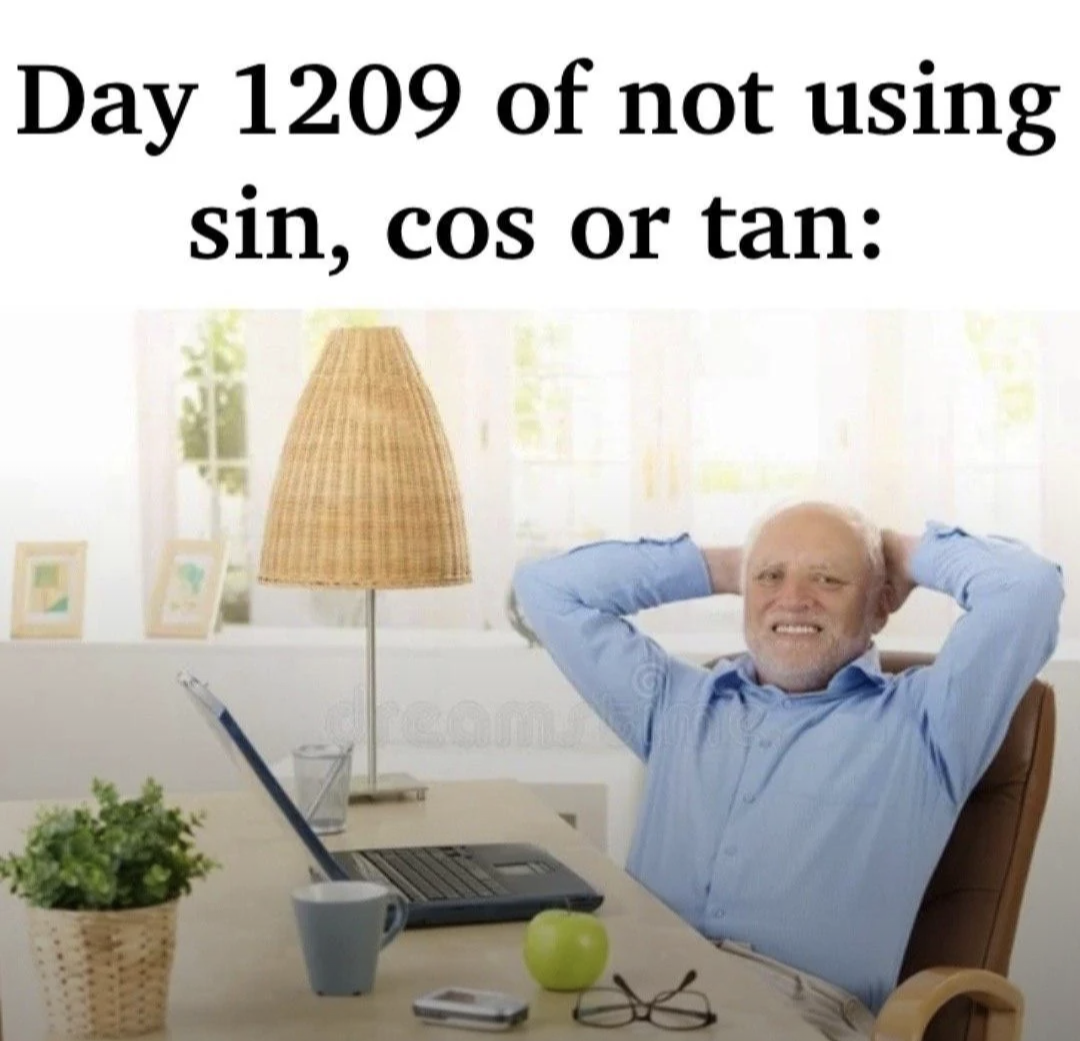this post was submitted on 01 May 2024
144 points (76.9% liked)
Funny: Home of the Haha
5761 readers
584 users here now
Welcome to /c/funny, a place for all your humorous and amusing content.
Looking for mods! Send an application to Stamets!
Our Rules:
-
Keep it civil. We're all people here. Be respectful to one another.
-
No sexism, racism, homophobia, transphobia or any other flavor of bigotry. I should not need to explain this one.
-
Try not to repost anything posted within the past month. Beyond that, go for it. Not everyone is on every site all the time.
Other Communities:
-
/c/[email protected] - Star Trek chat, memes and shitposts
-
/c/[email protected] - General memes
founded 1 year ago
MODERATORS
you are viewing a single comment's thread
view the rest of the comments
view the rest of the comments

Check out 3d graphics related stuff, there's a ton of geometry used there, whether you're ray tracing or using 2d projection.
A ray tracer is basically made up of:
And that's basically it. It will be slow without optimizations but it's cool af seeing your renders. And you can improve on it from there if you want. Though a warning: you might get obsessed with analysing different visual phenomena and thinking about how to render something like that for a while after doing this, which might also lead to gaining a critical eye for where 3d engines fail to be accurate.